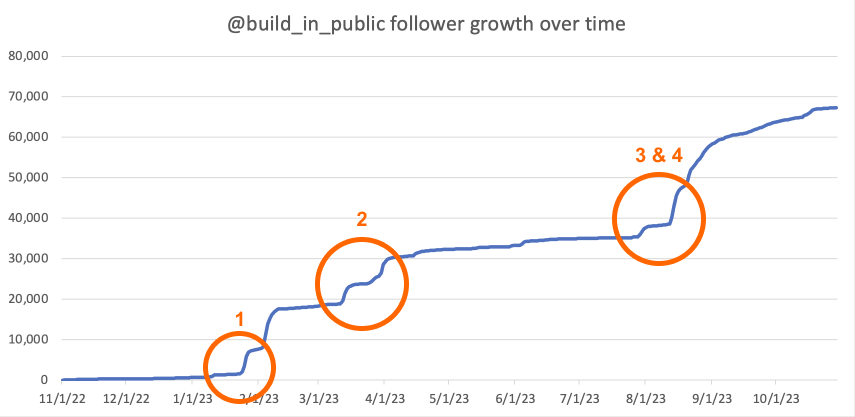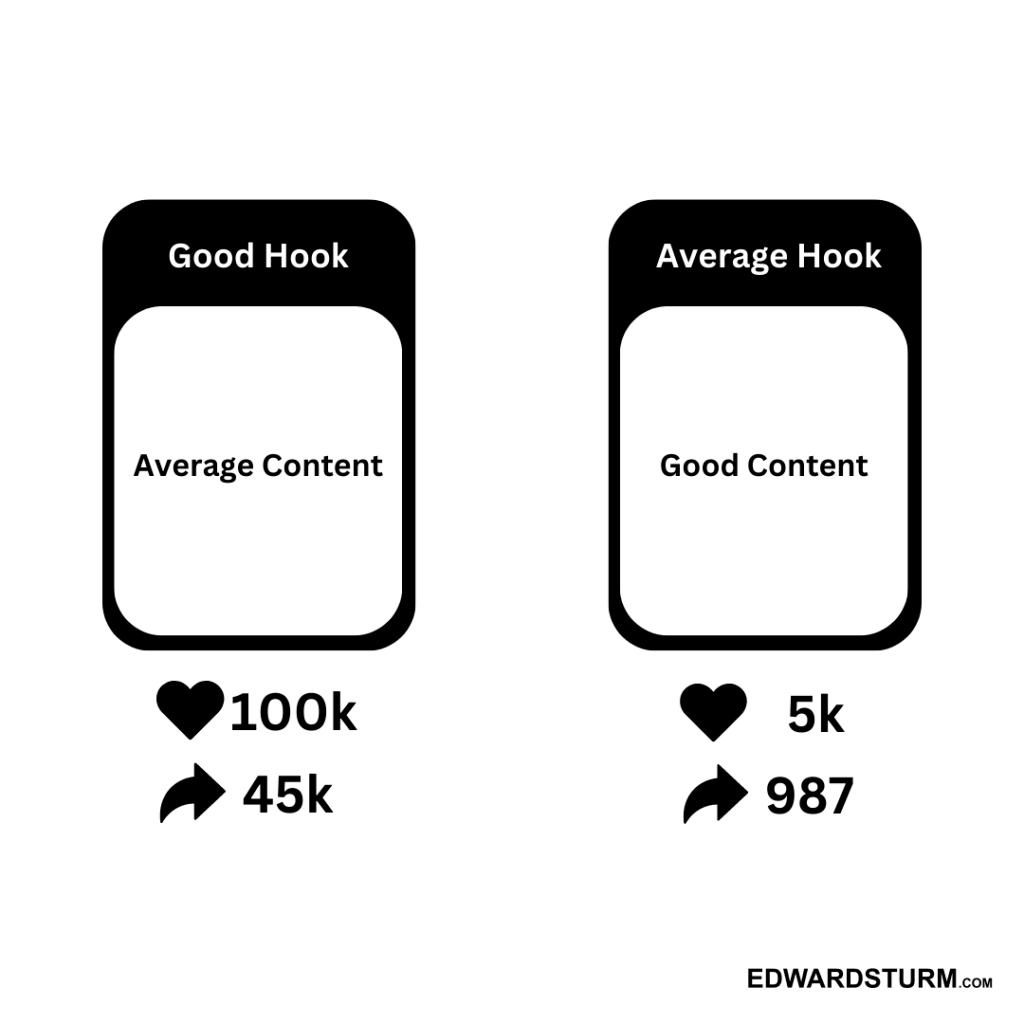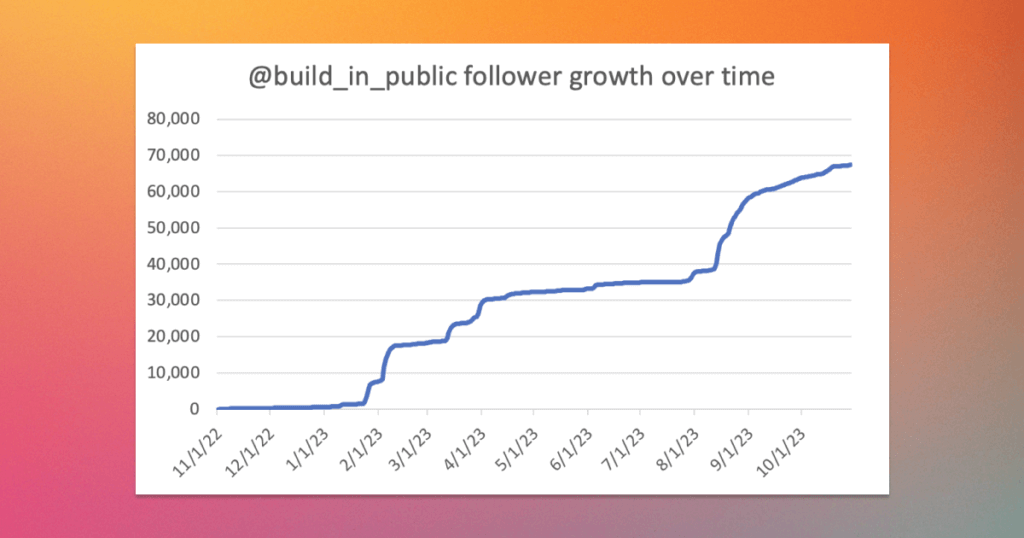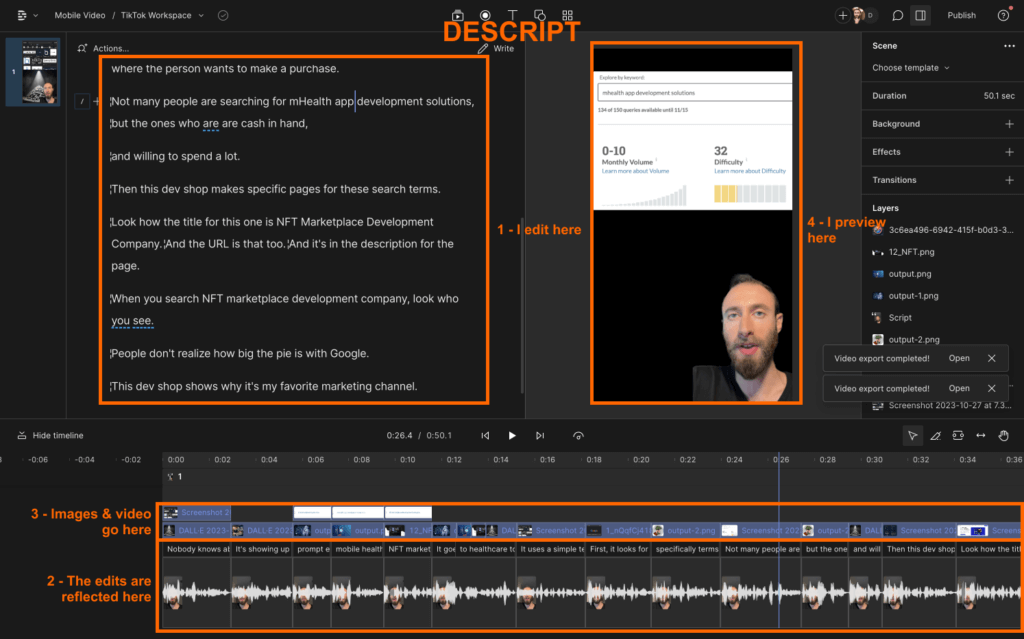Some of you may not have found this article through TikTok.
I have a TikTok. It’s growing at a healthy pace. The videos are decent. I make videos exclusively about growth hacking for startups.
But it didn’t always used to be this way.
The videos used to suck.
And the content used to be all over the place.
And I used to have no followers.
In fact, 362 days ago, on Nov 1, 2022, when I opened the account, I had zero followers.
Since then, I’ve managed to put out at least one video a day.
I’ve never missed a day.
Even when I had the norovirus during a weekend trip to Barcelona I still managed to get out one lazy video:
@build_in_public The two year rule in startups is a relentless law that everybody breaks. #buildinpublic #startup #indiehackers #learnfromme ♬ Cornfiield Chase-原野追逐 - 格格
I’ve also charted my growth without missing a day.
Every morning at 6 AM, I write in a spreadsheet how many followers I have. To the number:
And this has given me insights that other creators who don’t chart growth don’t have.
If I take these numbers and turn them into a line chart, I can pinpoint each lesson that led to each spike in growth.

So, that’s what I’ll be sharing in this article.
A few days ago, I recorded a 25-minute podcast about every single iteration I made to my content. You can listen to that here.
But this article will only cover the most impactful ones.
The 20% of iterations that lead to the 80% of growth.
Let’s start.
Iteration one: Hooks
A good hook with average content goes viral. An average hook with good content flops.

I made this video:
@build_in_public The founder of Nest is releasing a smart trashcan that automatically mails your scraps to chickens. #technews #startup #newtech ♬ Colorvision - Com Truise
The editing was sloppy.
The subject matter was meh.
But the hook. The hook was a work of art.
And I wasn’t even thinking of making a good hook – I copied the headline for a TechCrunch article about the product!
But a friend told me the hook was great.
And when the video took off…
I realized how important hooks are.
I hadn’t put thought into them prior.
The growth that followed was me making several videos with good hooks.
Hooks are key. Here are some of my recent successful hooks.
Iteration two: Capitalize off trending events
A simple lesson that I had been ignoring up until this point.
If something is trending in your niche and you cover it, it’s easy views.
During the Silicon Valley Bank Collapse, I put out 4-5 videos a day on the subject. I did this for three days. All of the videos got at least tens of thousands of views.
One of the videos got many millions and became the most viewed video in the world on the collapse.
After this, I became more mindful about spinning my niche in the direction of trending topics for easy views.
Iteration three: I automated my editing workflow
Lessons three and four came quickly, one after the other.
But the first was that I stopped editing within the TikTok app.
Editing in the TikTok app is easy. It’s quick. It’s perfect for getting started and building momentum.
But there were things I was doing, such as removing gaps between words, and making videos in multiple cuts – that I wanted to remove from my workflow.
I tried a new tool.
It transcribes video and audio. You edit in the transcript like a Word doc rather than in the timeline.
It also automatically removes all the gaps between words. I no longer had to make these cuts myself. Everything was automatic.
It has a green screen effect.
And you can add images and videos.
This made it so I could shoot my videos in one clip rather than multiple clips and have Descript’s AI remove the more tedious parts of editing.
My speaking became more authentic because I didn’t need to think about starting and stopping the camera, repositioning it, etc.
And the level of sophistication I could put into my videos increased without an increase in time.
Iteration four: Focused more on giving value to viewers
After posting for so long, I got a sense of who resonated with my content and what they wanted.
Rather than tech news and platitudes, I started focusing exclusively on founder stories, hacks, and new marketing discoveries I was making.
Founder stories:
@build_in_public This 21 year old is making a fortune selling Notion templates. ##buildinpublic##indiehackers##entrepreneurjourney##entrepreneurship101 ♬ Lofi Vibes - Gentle State
Hacks:
@build_in_public How to get more views on Instagram Reels. #instagramtips #socialmediahacks #techtips #buildinpublic ♬ Mood Music - Evil Needle
New marketing discoveries:
@build_in_public ⚠️⚠️ Please note: I don’t condone or encourage this! #blackhat #entrepreneurship #marketinghacks #growthhack ♬ som original - Maiko
Giving direct value.
I believe this improvement and solidified direction in subject matter – coupled with my improved editing capabilities – created the spike in growth you see in position four.

Sometimes, I would combine this new direction with trending news.
I discovered a glitch with TwitterX ads that allowed me to get millions of impressions and thousands of link clicks for a dollar-per-day ad spend:
@build_in_public I shouldn’t be sharing what’s going on with Twitter. #twitterx #mediabuyer #elonmusk #mediabuying ♬ Close Eyes - Slowed + Reverb - DVRST
My audience loved this, and not only did it go viral, but other people started talking about this as well.
It became trending news.
So, I made many videos offering value about this glitch and what I was doing with it.
Because this was trending, each one of these videos performed way above average.
I shared it on my podcast. I even made a TikTok Series Tutorial about it.
Stringing together incremental advances
I’ll end this article with this quote from Michael Bloomberg.
Life, I’ve found, works the following way:
Daily, you’re presented with many small and surprising opportunities.
Sometimes you seize one that takes you to the top.
Most, though, if valuable at all, take you only a little way.
To succeed, you must string together many small incremental advances rather than count on hitting the lottery jackpot once.
Trusting to great luck is a strategy not likely to work for most people.
As a practical matter, constantly:
-Enhance your skills;
-Put in as many hours as possible and;
-Make tactical plans for the next few steps.
Then, based on what actually occurs, look one more move ahead and adjust the plan.
Take lots of chances, and make lots of individual, spur-of-the-moment decisions.
Don’t devise a Five-Year Plan or a Great Leap Forward.
Central planning didn’t work for Stalin or Mao, and it won’t work for an entrepreneur either.
Thanks so much for reading.
Here’s 100% of the iterations made along this one-year journey. Listen on YouTube below, Spotify, or Apple Podcasts.













